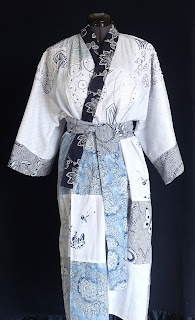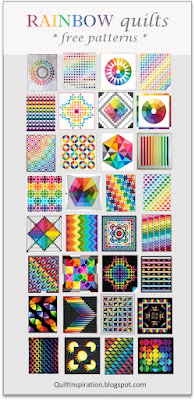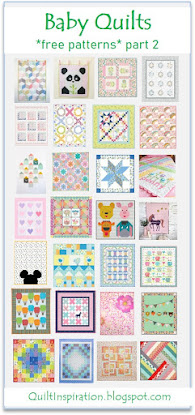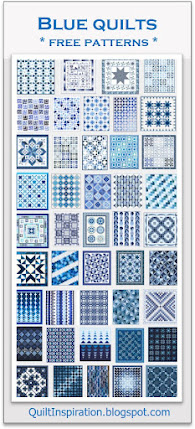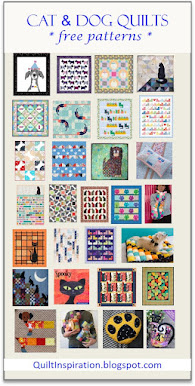The Connecting Our Natural Worlds exhibit by SAQA showcases art quilts that
illustrate the natural wonder of habitats around the globe.
Through their own unique artistic interpretation, each artist has
identified danger to flora and fauna in their own backyards. The selected pieces inspire viewers to get closer to nature and
become better stewards for our environment. We recently visited this outstanding exhibit at the Brigham City Museum in Utah.
~ p.s. Check out our eBay shop for great bargains on books, magazines, and collectible items. For free quilt patterns, please visit us on Twitter.
Spring by Aileyn Renli Ecob (Walnut Creek, California)
Spring features a very old, native California oak tree growing on the crest of a hill near where Aileyn Renli Ecob lives. This majestic tree was created with cotton, cheesecloth, tulle, ink, and paint. Aileyn used many different techniques to create the beautiful effects: raw edge applique, machine quilting, thread painting, inking, dying, and fabric painting.
The number and ferocity of forest fires has increased dramatically during the last decade, threatening beautiful old trees like this one. Ailey notes that saving lives and our forests is worth our efforts. "Experts tell us that nearly all wildfires are caused by human activity. We need better forest management, power line maintenance, individual care with fires, and control of climate change."
Plight of the Monarchs by Kathy Puente (Alamo Heights, Texas)
Contrary
to what you may think, this tree is covered with monarch butterflies
(not leaves!) Plight of the Monarchs
is a tribute to the migrating monarch butterflies that migrate from the
U.S. to Mexico for the winter, then make the flight back every spring.
The quilt is cleverly made with fabric, paint, and wire, and is hand
quilted, thread sketched, and hand sewn. The hand quilted swirls throughout the background bring to mind butterflies dancing on gusts of wind.
Kathy Fuente notes, "In both seasons, hundreds of thousands of monaarch
butterflies fill the sky and land in my back yard for a rest and meal,
beckoning me to enjoy their beauty."
Monarchs need warmth to survive, and due to the changing climate, their populations are being drastically reduced. The U.S. Fish and Wildlife Service has a webpage dedicated to the monarch butterfly with information on how individuals and communities can help.
Only Three by Cheryl Lipari (Priest River, Idaho)
Cheryl Lipari lives in a beautifully wild temperate rain forest near the Selkirk Mountains of Idaho that has been home to the Woodland Caribou for thousands of years. This wonderfully realistic landscape pays tribute to the endangered caribou. The quilt is made with hand-dyed and batik fabrics and hand dyed wool, using raw edge fused applique, felting (see the caribou and the clouds), and machine quilting.
The southern end of the Selkirk Mountains was the home of the last naturally-occurring caribou herd in the contiguous United States, which had dwindled to only a few by 2018 due to logging and other activities. The remaining members were relocated to Canada in the hopes of saving the species.
Cheryl Lipari notes that we must protect our precious wilderness areas and the animals that inhabit them for future generations. She urges speaking out against activities that damage our forests, and supporting groups that are devoted to protecting all inhabitants of our planet.
Manzanita by Ruth E. Murayama (Denver, Colorado)
Manzanita is a tribute to this shrubby tree of the same name, which is known for its reddish sculpted trunk and branches. Ruth E. Murayama says that, having grown up in California, she loves these plants (and so do we). Ruth has managed to perfectly capture the color and intriguing shape of the manzanita, which stands out against the arid hills. This quilt was created with commercial and hand dyed cotton and eco-dyed wool, using fused applique and machine quilting.
While not officially endangered, the manzanita has been threatened by California wildfires. Massive clear cutting of the chaparral and replacing it with weedy grasses destroys the manzanita and contributes to fire risks. Instead, selective clearing to create strategic fire breaks and defensible space is a more viable approach.
Regeneration (diptych) by Amanda Miller (Eugene, Oregon)
Forests in the northwest have (also) been decimated by deadly wildfires in recent years. Slowly they begin to grow again, a process that takes years. Regeneration is a striking contemporary art quilt made as a diptych that depicts the transformation from destruction to rebirth after wildfires. Amanda Miller created this piece with commercial and hand dyed cotton. It is machine pieced and quilted, creating stunning shapes, colors, and textures.
As Amanda Miller explains, "There is no agreement on how to deal with these destructive blazes. Education and increased regulation of forested recreational areas may decrease the number of fires caused by humans. Controlled fires and new forest management techniques could mitigate their size... also, restricted development in sensitive areas may be a partial solution.
Image credits: Photos were taken by Quilt Inspiration at the Brigham City Museum in Utah. As of August 2021, many of the pieces can be purchased at the Connecting Our Natural Worlds web page.








































